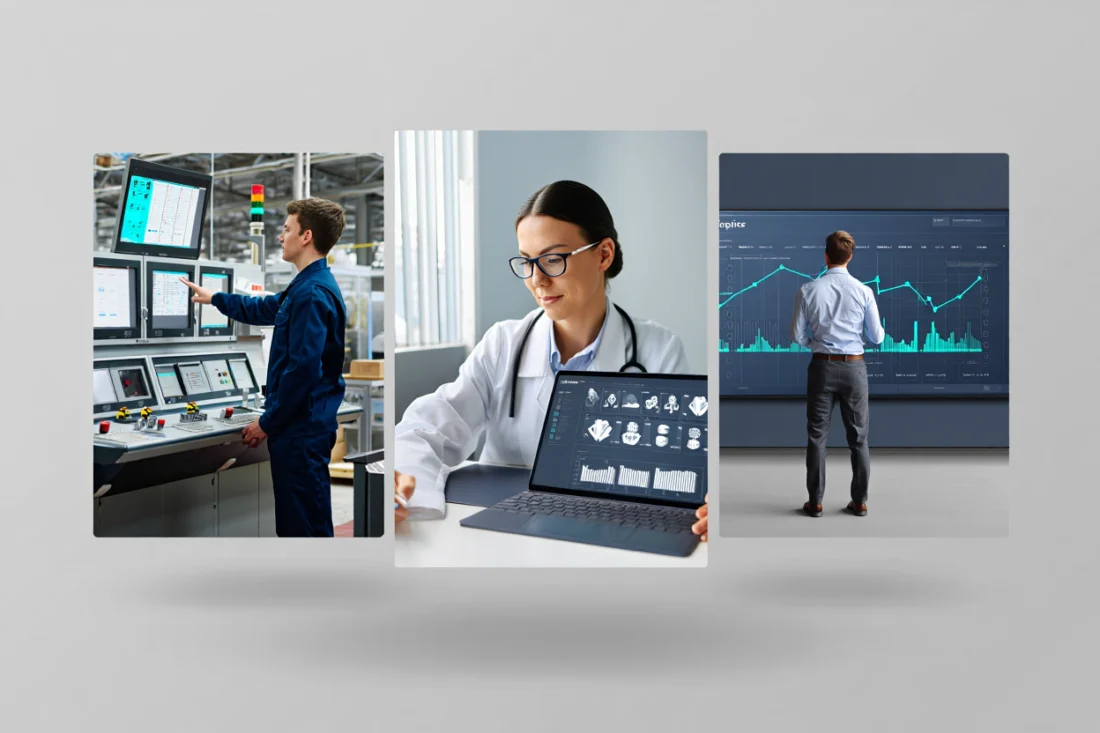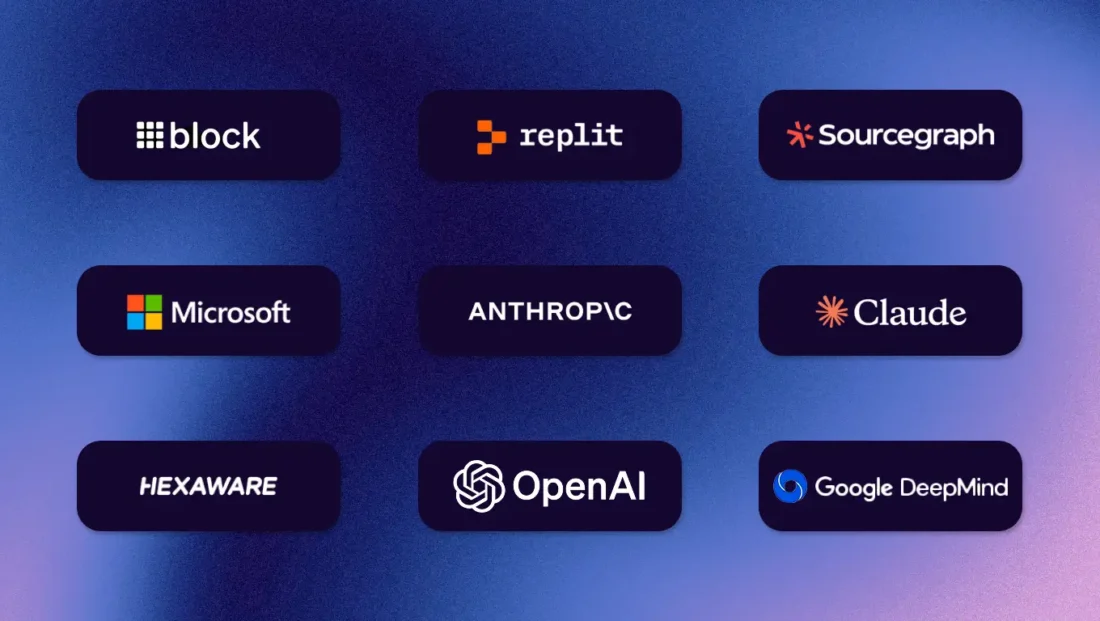Wondering what is MCP in AI? Model Context Protocol (MCP) in AI standardizes how AI systems interact with external data sources and tools. It enables seamless communication and enhances interoperability. This guide explains what MCP is in AI, its architecture, key benefits, and real-world uses.
The Model Context Protocol (MCP) is an open protocol designed to provide context to AI models across different integrations. It aims to standardize how artificial intelligence systems integrate and share data with external tools, systems, and data sources. MCP serves as a backbone for AI agents connecting to real-world applications, enhancing their functionality and relevance.
Unlike traditional APIs that offer service-specific interfaces, MCP provides a unified framework for communication. Inspired by the Language Server Protocol (LSP), MCP extends its capabilities by supporting autonomous AI workflows. Leading AI platforms are adopting MCP to facilitate integration with external tools and data sources, enabling scalable and effective AI-driven workflows.
Imagine MCP becoming as critical to AI applications as HTTP is to web development – that’s the potential significance it holds. Just as USB-C acts as a universal connector for devices, MCP serves as a universal interface for connecting AI systems and tools, allowing for seamless and versatile interactions.
MCP enables interoperability across:
- APIs
- Tools
- Databases
- Services allowing for seamless integration.
By providing context to AI models, MCP ensures that even sophisticated models can benefit from real-time access to external data, making them more effective and context-aware in modern AI ecosystems.
Why Understanding What Is MCP in AI Matters for the Future of AI Ecosystems

MCP addresses a significant problem in the AI ecosystem: the challenge of connecting AI systems to various data sources and tools without creating fragmented integrations. For agentic AI systems that require seamless access to diverse data, MCP is a game-changer. Traditional API calls are often limited in scope and require bespoke connectors, but MCP offers a standardized approach that simplifies these processes. MCP also improves tool access for AI agents by providing a unified protocol for connecting to external knowledge sources and actions, unlike traditional methods that often restrict or complicate access.
This standardization is crucial for the growing number of AI-powered tools and platforms. Enabling multiple MCP servers to communicate and share information enhances the capabilities of AI assistants and other autonomous agents. MCP allows AI systems to interact with multiple tools and switch between different tools seamlessly, supporting flexible integration and multi-step workflows without extensive customization. The integration of MCP into AI systems supports a more cohesive and efficient AI ecosystem, allowing for a standardized way of implementing more context-aware AI applications.
How MCP Works
At its core, MCP operates on a client-server architecture. The protocol defines the communication between clients and servers, message format, action descriptions, and result returns. MCP supports secure two way connections between AI clients and external systems, allowing for bidirectional communication and seamless integration. This standardized approach ensures compatibility and structured responses, providing a framework for interoperability among AI systems, tools, data sources, and a variety of external systems.
Client-Server Architecture
MCP servers can connect to various local and remote servers, enabling access to diverse data sources, including multiple servers. They act as gateways, ensuring secure access to these services. New MCP servers allow MCP clients to maintain direct connections to servers, allowing for dedicated interactions and efficient data exchange, which is essential for MCP server implementations. You can also set up your own MCP server for enhanced control. By providing a standardized protocol, MCP significantly reduces the need for custom integrations, making it easier for developers to connect AI systems with external tools and data sources without bespoke development.
The MCP client manages sending requests, receiving results, and passing them to the AI, acting as a mediator for tool requests between the AI and the matching server. This shared protocol provides ai agents with the ability to connect to new tools and understand how to use them without needing custom connectors for each ai agent. MCP also enables AI agents to interact with internal tools, allowing access to internal data sources, workflows, and coding environments, as well as external ones.
Real-Time Context Management
The primary function of an MCP server is to translate AI requests into commands for various tools. This allows AI assistants to retrieve fresh information from APIs, databases, internal systems, and cloud databases, enhancing the accuracy of AI responses by providing up-to-date information.
MCP servers act as intermediaries that manage and route real-time context between Large Language Models (LLMs) and external environments. Similar to how web browsers like Chrome and Safari retrieve and interact with web pages, MCP enables AI systems to access and interact with web content, supporting web browsing tasks. This real-time context management is crucial for maintaining the relevance and accuracy of AI responses.
Use Cases of MCP

MCP is making waves across various industries, demonstrating its versatility and utility. In software development, many MCP servers enable developers to stay within their IDE and perform database checks or manage cache without switching applications. Coding agents leverage MCP to provide real-time access to coding environments, streamline developer workflows, and enhance context-awareness for tasks like debugging and command execution. This seamless integration of integrated MCP enables developers and supports MCP, promoting productivity and efficiency within the MCP ecosystem. Additionally, the MCP host provides a robust environment for these operations. Furthermore, MCP defines a new standard for efficiency in development processes.
In business process automation, MCP serves as a vital protocol for automating workflows by enabling seamless integrations between various tools. AI apps can utilize MCP to automate tasks and trigger actions across platforms, streamlining business operations and improving workflow efficiency. This reduces the need for manual intervention and increases operational efficiency. Additionally, MCP’s context-aware capabilities significantly improve the accuracy of responses generated for Natural Language Processing (NLP) tasks, making it a valuable asset in this field.
These use cases illustrate how MCP extends beyond simple data exchange, providing a robust framework for enhancing AI applications across multiple domains. Whether it’s streamlining development processes or automating complex business workflows, MCP proves to be an indispensable tool. Organizations can connect AI to a wide range of external tools and data sources using MCP, enabling smarter automation and more efficient integration across platforms.
Benefits of Using MCP

MCP offers several key advantages:
- Provides a universal standard for connecting AI systems to external data sources, simplifying previously fragmented integrations.
- Eliminates the need for separate connectors for each data source, promoting a standardized approach that enhances interoperability.
- Maintains a shared context that enables AI agents to remember previous tasks and interactions, improving their efficiency over time while connecting AI assistants.
- Streamlines tool discovery by providing a standardized way for AI systems to identify, rank, and connect with new tools, improving consistency and user experience.
The implementation of MCP reduces the need for cumbersome, custom integration API connections when integrating new applications or services. This promotes higher developer productivity by minimizing the need for custom coding and allowing developers to focus on building complex automations. MCP also facilitates seamless MCP integration with various tools, allowing businesses to automate tasks across platforms efficiently.
The integration of MCP into business workflows enables real-time data access and interaction, enhancing operational efficiency. MCP enables integration with popular enterprise systems such as Google Drive, Slack, and GitHub, making it easier for businesses to connect AI tools with widely-used platforms. By connecting AI directly to the necessary data repositories, MCP enhances AI’s ability to produce relevant responses, making it a valuable asset for businesses looking to leverage AI technology.
Getting Started with MCP
Getting started with the Model Context Protocol (MCP) is a straightforward process that opens up powerful possibilities for integrating AI models with a wide range of external tools and data sources. At its core, MCP is built on a client-server architecture, which provides a standardized way for AI systems to interact with the outside world.
The journey begins by understanding the two main components: the MCP client and the MCP server. The MCP client is typically embedded within your AI application or AI assistant. Its job is to send requests and receive responses, acting as the bridge between your AI model and the external environment. On the other side, the MCP server is responsible for exposing the specific capabilities of an external tool, data source, or API. This could include anything from accessing a cloud database, integrating with a business tool, or connecting to a legacy system.
By leveraging the model context protocol, developers can enable their AI models to access and utilize external tools and data sources in a consistent, reliable manner. This means your AI can perform tasks like retrieving up-to-date information, executing commands, or even automating workflows—all through a unified protocol.
Challenges and Future Directions
Despite its many benefits, MCP faces several challenges that need to be addressed. One major issue is the lack of a built-in workflow concept to integrate tools for managing multiple function calls in sequence, which limits its specific capabilities regarding custom implementation of developer tool use. The developer community is seeking standardized solutions for tool selection and UI/UX patterns when building MCP clients.
There is excitement around MCP, but many unsolved problems still exist, such as the need for a unified MCP marketplace and seamless authentication for AI agents. The potential for slash commands to improve tool discovery and execution within MCP-enabled clients is also being explored, as they can help create a more predictable and streamlined user interface.
Security Concerns
MCP currently employs a session-level access control system, which offers either full access or full restriction. This model lacks granularity in access restrictions, potentially leading to security vulnerabilities. MCP uses OAuth 2.1-based authorization flows, which are commonly adopted for secure access data control.
However, authentication methods in MCP are currently managed independently by each implementation, which may result in inconsistencies and security risks. Identified security issues include prompt injection, tool permissions that can exfiltrate files, and the risk of lookalike tools replacing trusted ones.
Addressing these security concerns is crucial to support MCP for the future success of MCP.
Standardization and Usability
MCP currently faces challenges such as the lack of a standard authentication mechanism, which complicates secure interactions across diverse AI tools. Future developments for MCP include improved authentication mechanisms to enhance security and streamline interactions.
The lack of a structured MCP server registry complicates the process for AI agents to discover and integrate with available servers effectively. Creating a server registry will empower seamless discoverability and integration of MCP servers, enabling a more unified AI ecosystem.
Companies Adopting MCP

Major companies implementing the Model Context Protocol (MCP) include Block, Replit, Sourcegraph, and Microsoft Copilot Studio. These organizations are among the early adopters of MCP, playing a crucial role in pioneering the technology and shaping the future of the MCP ecosystem. Anthropic emphasizes creating safe and reliable AI through its contribution to MCP development, reflecting the protocol’s importance. Claude Desktop serves as a user-friendly MCP client, making integration and testing accessible for non-technical users and simplifying AI-powered tool development. Rapid Innovation is recognized as a leader in MCP development, focusing on comprehensive architecture and implementation. The Claude Desktop app also supports integration with MCP connectors, enabling local testing and deployment within enterprise systems.
Hexaware Technologies integrates intelligent context into cloud-native and legacy systems through its MCP solutions, while Softude specializes in developing scalable MCP solutions tailored to enhance AI reasoning for varied business requirements.
Deeper Insights focuses on explainability and traceability in MCP design, catering mainly to regulated industries, while Quytech builds practical MCP frameworks for applications like AI copilots, providing relevant information for customer service automation.
OpenAI and Google DeepMind are notable for their recent announcements supporting the Model Context Protocol. Demis Hassabis, CEO of Google DeepMind, confirmed that MCP support is included in the upcoming Gemini models. Microsoft Corporation is adopting MCP via Azure OpenAI, highlighting the protocol’s growing industry acceptance. Popular enterprise systems such as Google Drive can also be connected via MCP, allowing AI tools to access and interact with external data sources.
Conclusion
The Model Context Protocol (MCP) could be the backbone of connected AI, enabling seamless integration and communication between AI systems and external tools. Providing a standardized framework, MCP addresses the challenge of fragmented integrations and enhances the model capabilities of AI assistants, agents, and the AI model.
If your team is looking to build AI-powered tools or enhance existing ones, MCP adoption could provide significant benefits. The protocol’s ability to facilitate real-time context management, improve response accuracy, and streamline integrations makes it a valuable asset for any AI project.
Summary
In summary, the Model Context Protocol (MCP) offers a universal standard for connecting AI systems with data sources, simplifying previously fragmented integrations. Developed by Anthropic, MCP enables interoperability across APIs, tools, databases, and services, making it a crucial component for the future of AI.
As MCP continues to evolve, its potential to become the de facto standard for AI-powered workflows grows. By addressing existing challenges and improving usability, MCP can revolutionize the way AI interacts with external data sources and tools, paving the way for more efficient and accurate AI applications.


